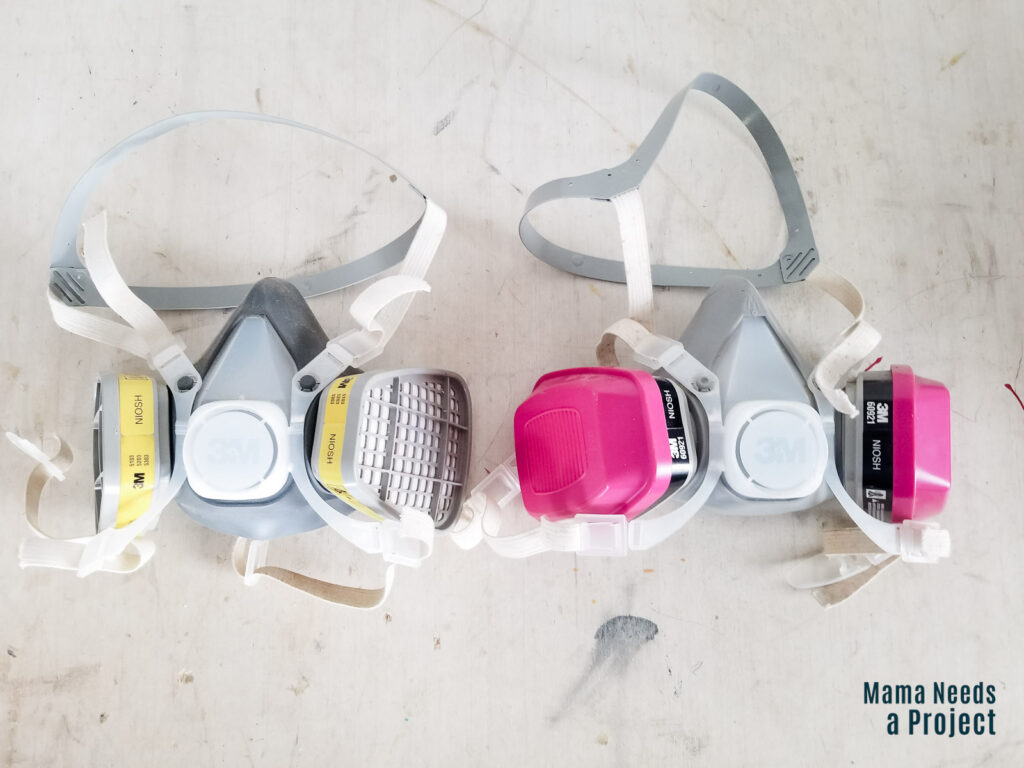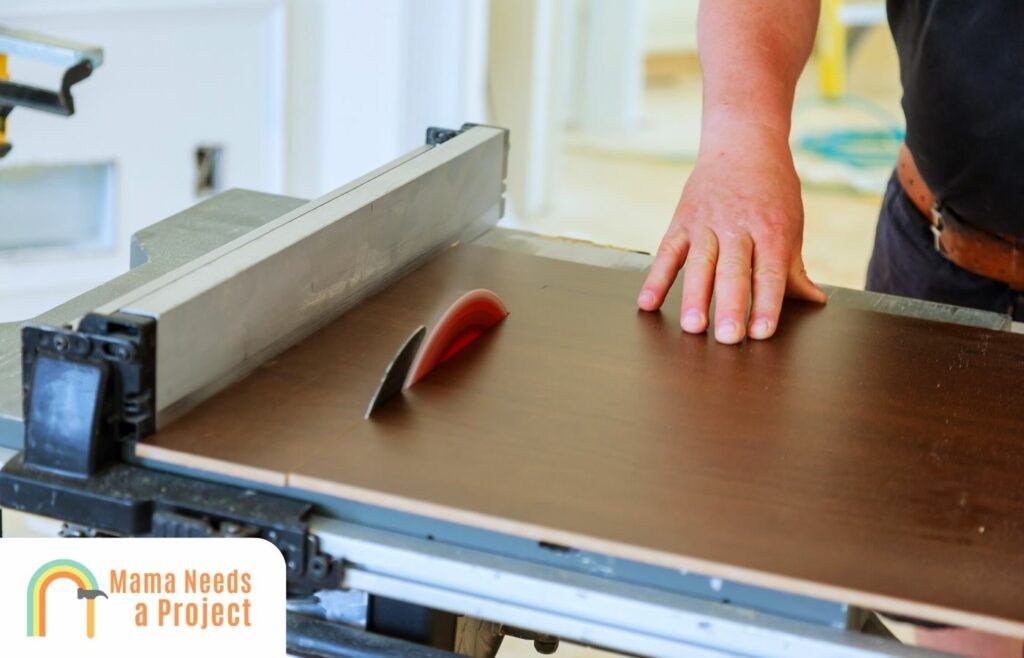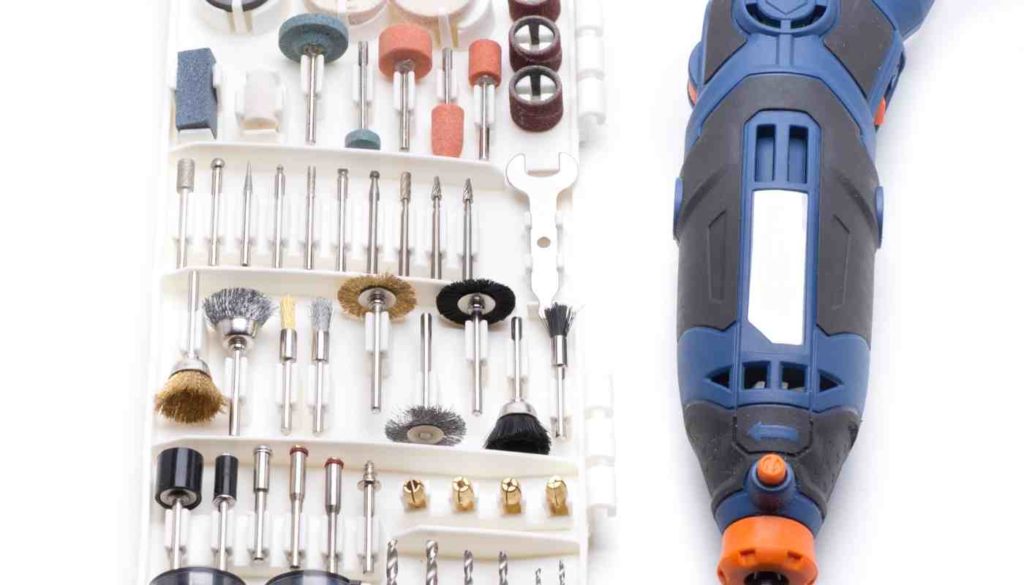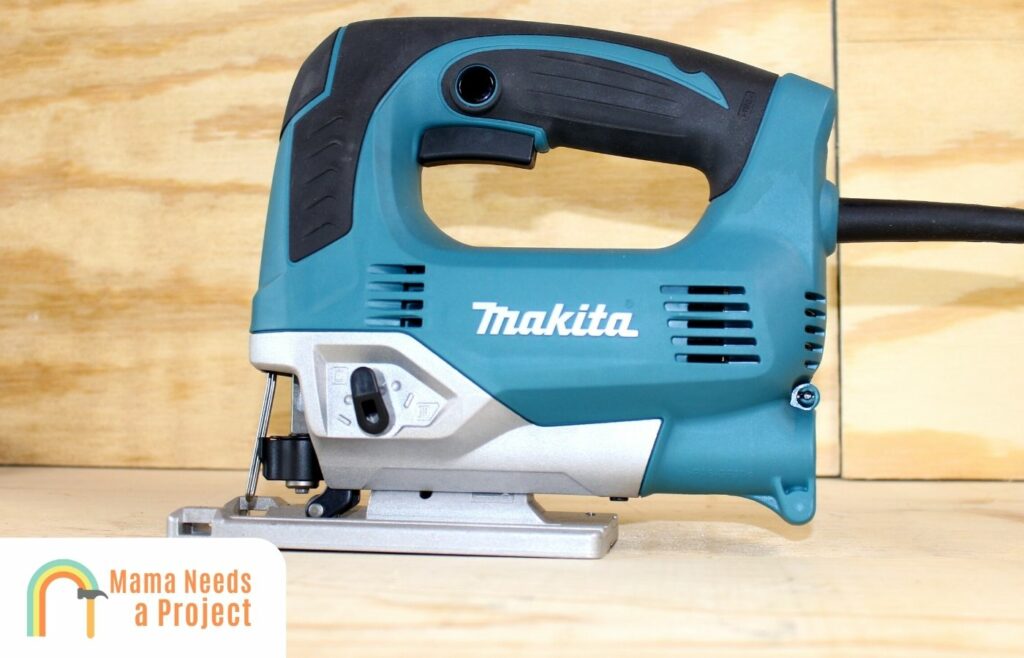Cutting Plexiglass with a Table Saw (Step by Step)
Looking to cut plexiglass with a table saw?
If you’ve never done it before, there are a few steps you’ll want to follow to ensure a clean cut.
In this post, I’ll show you exactly how to cut plexiglass with a table saw. Let’s dig in!
How to Cut Plexiglass with a Table Saw
1. Safety First

It’s important that you take the necessary safety precautions when cutting plexiglass with a table saw. This may require you to gather a few extra supplies but trust me; it’s worth it!
You may want to consider using a respirator or dust mask and safety glasses as well to protect both your eyes and lungs.
Finally, it’s always important to use a push block or push stick when cutting anything with a table saw. This keeps your fingers away from the blade and prevents any accidents that could occur.
2. Measure the Thickness of Your Plexiglass
Next, you’ll want to take a look at the thickness of the plexiglass you’ll be working with. You can do this with either a ruler or a tape measure.
The size of your plexiglas will play a role in what blade you’ll want to use when cutting plexiglass with a table saw.
In general, it’s best to only cut plexiglass that’s a ¼ inch or thicker with a table saw.
3. Calculate the Size of Your Cut
Now you’ll want to calculate the size of your cut and mark it on the plexiglass.
Keep the width of the saw in mind when you’re setting the fence as it can cause your measurements to be a little bit off – which nobody wants.
4. Make the Cut

Now, you’re ready to make the cut!
The process of cutting plexiglass with a table saw is similar to cutting wood or other materials using a table saw. However, there are some small details you need to take into consideration.
First, set the height of your blade so that it’s only 1/2 an inch higher than the plexiglass you are going to cut.
Next, make sure you’ve calculated and marked the cuts you want to make on your acrylic sheet. Be sure you wait as long as possible to remove the plastic film to help prevent the plexiglass from getting marked or scratched.
Lastly, put the plexiglass onto the infeed table on your table saw with the plastic film facing down, then set up your table saw as you normally would and make your cut!
Depending on the size of your sheet, you’ll want to make sure you press the plexiglass firmly down to make sure to doesn’t bulge or bend.
If you need more help, check out the video below!
Types of Plexiglass Sheets
Extruded Acrylic Sheets
Extruded acrylic sheets are produced by placing melted resin that’s somewhat soft between to rollers then cut to size. It has the highest internal stress within a sheet, the best thickness consistency, and is the softest sheet. This is why it’s commonly used for replacement windows and displays.
Cell Cast Acrylic Sheets
Cell cast acrylic sheets are produced by pouring PMMA resin that’s been melted between 2 glass plates. It has the widest range of colors available, the highest margin of error on thickness tolerance, and the best material for routing and cutting acrylic. This makes it commonly used for aquariums and signs.
Continuous Cast Acrylic Sheets
Continuous cast acrylic sheets are produced by pouring PMMA resin that’s been melted between 2 polished stainless steel belts. It has the widest range of sizes, the least amount of contraction and expansion, and the best material consistency. This type is commonly used for skylights and forming.
Plexiglass Strength
Wondering how the strength of plexiglass compares to other types of glass? Here’s how:
- Plexiglass sheet: Has a nominal thickness of .098 inches. It can handle a free-falling steel ball that weighs .25 pounds and requires 3.0 F50 energy to break.
- Single-strength window glass: Has a nominal thickness of .1 inches. It can handle a free-falling steel ball that weighs .25 pounds and requires .8 F50 energy to break.
- Laminated glass: Has a nominal thickness of .250 inches. It can handle a free-falling steel ball that weighs .25 pounds and requires 1.1 F50 energy to break.
The Best Table Saw Blade for Cutting Plexiglass
There’s not one specific table saw blade that’s used for cutting plexiglass as it’s going to depend on the thickness of the plexiglass you’re cutting.
For example, plexiglass that is 1/8th to 1/2 inches requires you to use a saw blade that’s either 10, 12, or 14 inches in diameter and has at least 80 teeth.
The thickest plexiglass, 1 to 2 inches, requires you to use a blade that’s 12 to 14 inches in diameter and 60 teeth.
I always recommend using a carbide tipped blade for cutting plexiglass with a table saw because it’ll give you a cleaner cut and reduce the chances of melting your plexiglass because they stay cooler.
Different Ways to Cut Plexiglass
While cutting plexiglass with a table saw is an excellent option, you may not have access to a table saw, or it may be too strong for acrylic sheets that are on the thinner side. If you’re trying to cut thinner plexiglass, I recommend trying out some of these methods. Between a circular saw, jig saw, and even a utility knife – you have options!
Dremel Grinder

If you’re looking to cut a thinner piece of plexiglass, a Dremel grinder may be your best option! This tool can make irregular cuts in acrylic sheets with ease. However, it’s important to note that this power tool isn’t great to cut straight lines; it can only make irregular shaped cuts.
How to cut plexiglass with a dremel grinder
- Place the plexiglass on a table and mark a cut line. I recommend leaving the protective film in place because it’ll prevent unwanted marks and cuts on your acrylic sheet. Be sure to clamp down the plastic sheet as well.
- Be sure to use a cutting wheel that’s meant for cutting plastic and not for cutting wood.
- If you’re working with a thicker piece of plexiglass or have a long cut line, I recommend adding flowing water over your cut line to prevent the acrylic sheeting from melting. Switch the Dremel on and lightly place the cutting wheel on the cut line.
- Continue making passes over the cut line you created. You want to remove enough acrylic so that you can bend the plexiglass so it separates along your cut line. Bend the plexiglass lightly and it will separate along your score line.
Utility Knife
Using a utility knife is one of the easiest ways to cut plexiglass sheets, especially if they’re on the thinner side. However, it’s important to note that using a plexiglass knife only allows you to make straight cuts.
Additionally, you need to be even more careful if using this method because the knife can slip on a thin sheet, increasing the risk of injury. I recommend making anywhere from 8 to 10 passes through the plexiglass so you can make sure you get a good score line.
How to Cut Plexiglass with a Utility Knife
- Place the plexiglass on a flat surface. Next, grab your ruler and put it on top of the plexiglass. Hold both objects firmly together.
- Grab your knife and cut along the ruler. When cutting, apply a little bit of pressure and slide the knife along the material. Essentially, you want to make sure you’re applying enough pressure so that the knife is removing some of the material, but be sure not to hurt yourself.
- Make additional passes over the line you just created. You want to remove enough material so that you can bend the plexiglass so it separates along the score line. Depending on the thickness of the plexiglass, this could take anywhere from 3 to 10 passes. Once you’ve removed enough material, you should be able to bend the plexiglass and it will separate without breaking.
Jigsaw

Jigsaws are a great tool for cutting plexiglass, wood, and many other materials. They can cut acrylic sheets of any thickness and allow you to make a variety of different cuts like irregular shaped cuts, circles, curves, straight lines, etc. Additionally, the finished cut tends to be pretty smooth in comparison to other cutting options.
Just like the table saw, you want to make sure that you have the right saw blade for the job. You want to ensure you have the right blade because blades that are made for cutting wood won’t cut plexiglass properly. You need a finer blade that’s meant for cutting plastic sheeting.
How to Cut plexiglass with a jigsaw
- Place the plexiglass on a flat surface and secure it in place with clamps. Next, you’ll want to connect your jigsaw to your vacuum to collect most of the waste that’s produced in the cutting process.
- Now, mark the plexiglass with a grease pencil so you have a guide when cutting. You can use a tape measure, ruler, or straight edge to get a line that’s as straight as possible.
- Next, place the jigsaw on top of the plexiglass, making sure you stay away from the edge. Start it up and move slowly.
- I highly recommend that you smooth the plexiglass after cutting it because it can be very sharp. We’ll go over in more detail below how you can smooth plexiglass sheet edges, but you can use a sanding block or finer grit sandpaper to smooth edges and a buffing pad to polish.
How Do You Smooth Plexiglass Sheet Edges?
Now that the plexiglass has been cut, you’re probably considering how you’re going to smooth and polish the plexiglass edge.
You’ll be happy to know that getting a very smooth finish is not difficult, but it can be time-consuming!
Sanding is the method to go with, but you should wet-sand the edges instead of dry sanding.
This means you’ll need water and waterproof sandpaper. It’s important to note that you will not be using just one type of sandpaper. You’ll use course sandpaper to smooth the edges of the plexiglass, but then you’ll use finer sandpaper to get a polished acrylic edge.
You don’t want to use electric sanding tools because the risk of error is too high, stick to tools like a sanding block and buffing pad.
The coarseness of sandpaper is determined by the grit. The higher the grit, the finer the paper is.
You will want to start sanding the cut edge with a grit of about 180. Once the edges are smooth and level, you can start sanding with paper that has a grit of 320 to 360. This is fine sandpaper that is usually used on wood to give it a polished finish. Lastly, you’ll want to finish the edge with 600-grit sandpaper. If done correctly, you should be left with a polished edge that has a very smooth finish.
Check out this guide to learn how to cut aluminum with a miter saw!
Final Thoughts
Cutting plexiglass sheets with a table saw is a great option, but it can also be a very demanding!
Anytime you use a table saw, it’s crucial that you work with the proper safety equipment and have a safe working environment. Remember, you’re safety should always come first!

